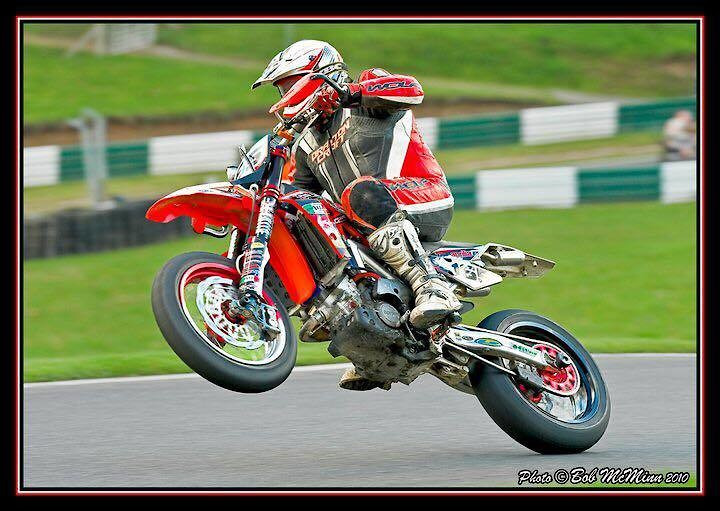For those looking to enhance their Supermoto Bike, the necessary upgrades vary significantly depending on the intended use. Whether you’re cruising the streets, hitting the track for fun, or aiming for competitive racing, different modifications are crucial.
If your supermoto bike is primarily for street riding, basic enhancements like upgraded wheels and a larger front disc brake can provide noticeable improvements in handling and braking performance. These modifications offer a good starting point for street enthusiasts seeking a more responsive and capable ride.
Stepping up to track days requires more substantial upgrades. To effectively tackle the demands of circuit riding, consider investing in a bigger front disc, a 4-pot caliper, and a decent master cylinder. This enhanced braking system provides the necessary stopping power and modulation for aggressive track riding.
For those with racing ambitions, transforming a supermoto bike into a competitive machine demands a comprehensive approach. Optimizing the geometry is paramount, often involving lower offset clamps and potentially a steeper head angle to achieve precise handling. Suspension is another critical area; a complete fork revalve tailored for tarmac is essential, alongside a supermoto-specific rear shock that is significantly stiffer. A ride height adjuster on the rear shock can further refine handling by raising the rear end for improved turn-in.
Engine modifications are equally important for racing success. While a stock 450cc motocross engine with a performance exhaust might suffice for MX, supermoto racing demands more. A superior exhaust system, possibly a twin system, and an inlet kit are crucial for unlocking extra power. Custom components, such as a 3D-printed inlet manifold and a high-flow air filter like a K&N, can further optimize engine performance. A programmable ECU, like a Vertex, with supermoto-specific maps, allows for fine-tuning the engine for optimal power delivery on the tarmac.
To manage the intense demands of supermoto racing, a slipper clutch and a quick shifter are highly recommended. These components minimize bike instability during aggressive gear changes and corner entries, allowing riders to maintain momentum and focus on cornering. Without these, riders might be forced to compromise gearing, hindering overall performance.
While high compression pistons are sometimes considered for performance gains, some experienced tuners prefer to maintain a slightly lower compression ratio for supermoto racing. This approach can result in a more freely revving engine and improved high-RPM performance, which can be advantageous on the track.
 An upgraded Aprilia MXV450 supermoto bike, showcasing modifications for racing, which won the British Clubman Championship in 2010.
An upgraded Aprilia MXV450 supermoto bike, showcasing modifications for racing, which won the British Clubman Championship in 2010.
Building a competitive supermoto bike can quickly become a costly endeavor. As with all forms of motorsport, increased speed comes at a price. It’s not uncommon to invest upwards of $25,000 in building a top-tier supermoto machine. Even starting with a newer Honda platform, racers can easily spend around $15,000 to create a race-ready bike, including a spare set of wheels. This investment reflects the high level of specialized components and tuning required to achieve peak performance in supermoto racing.

